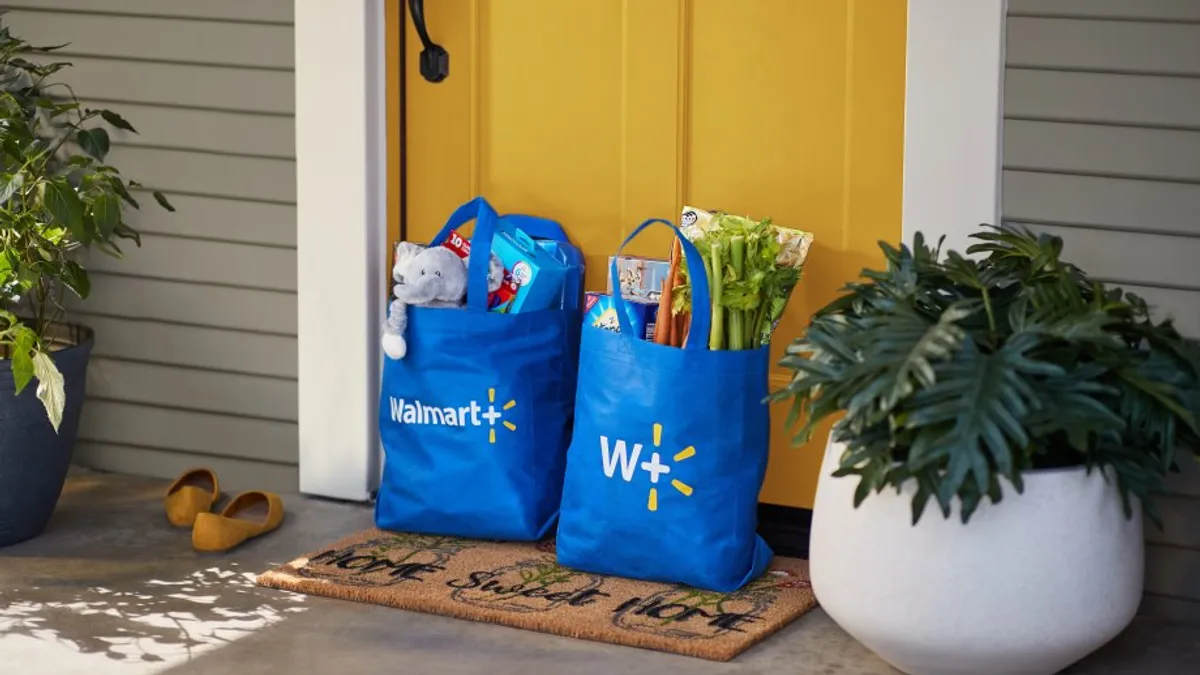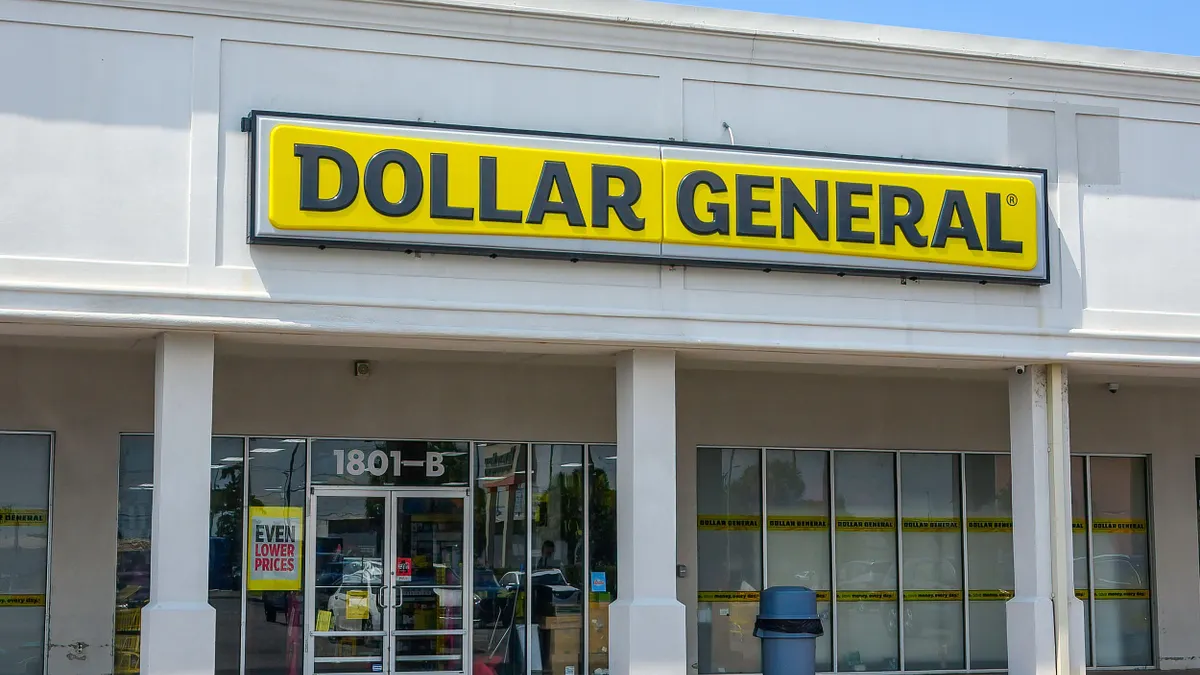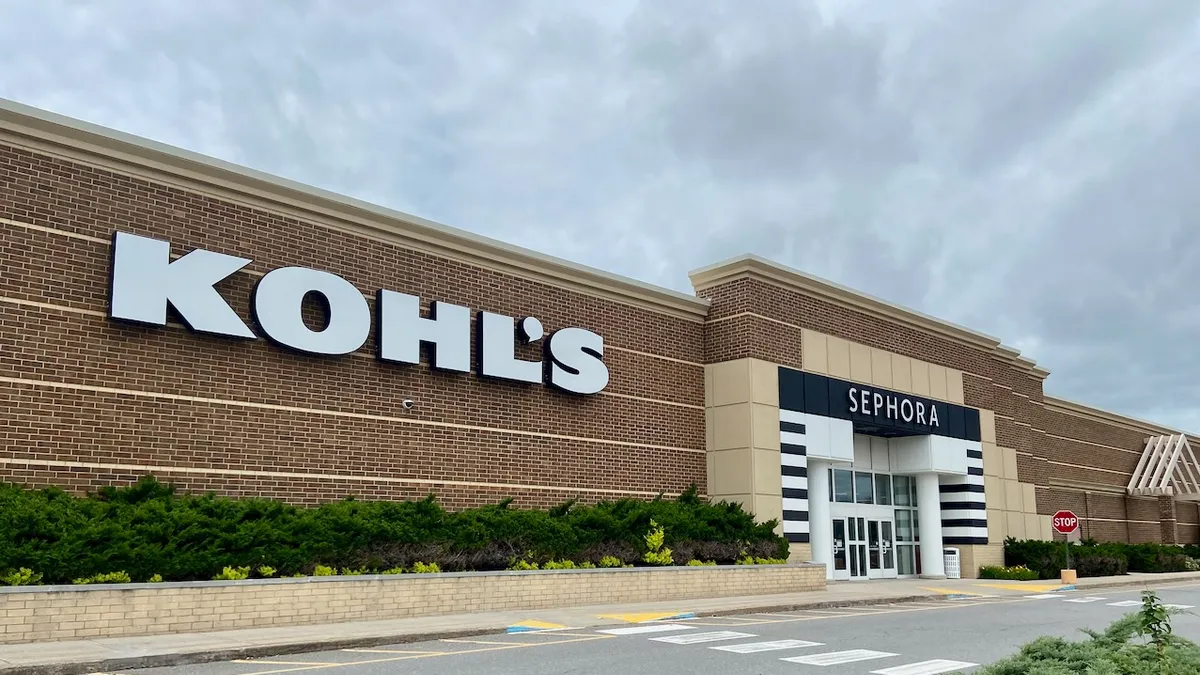With the launch of Walmart+ this week, comparisons to Amazon Prime were inevitable. The subscriptions each cost roughly a C-note annually, and each comes with exclusive perks.
There are also plenty of differences.
For $119 per year, Amazon Prime subscribers get free two-day delivery on "millions of items," free one-day delivery on "more than 10 million items," free same-day delivery on orders above $35, the Netflix-like Prime Video streaming service (which also rents movies), unlimited digital photo storage and discounts at Whole Foods, among other benefits.
For $98 per year or $12.95 per month, Walmart+ subscribers receive unlimited free same-day delivery on more than 160,000 items including fresh produce and other groceries, household essentials and general merchandise. (This aspect of the program was previously known as "Delivery Unlimited," and those members are now automatically Walmart+ members, Walmart said in a blog post.) Walmart+ also includes discounts on fuel at various locations and access to "Scan & Go" in the Walmart app. (The latter allows customers to scan their items as they shop, then use Walmart Pay for touch-free payment in store.)
Walmart says more benefits are being added. But, given its relatively small assortment available for same-day delivery and the lack of less practical but more fun perks like streaming content, several observers have deemed Walmart+ a weakling against Amazon Prime.
"While it's the matchup of retail giants that we've all been waiting for, looking at how Walmart+ matches up against Amazon Prime, in reality, is like comparing a pea shooter to a bazooka," George Chang, executive marketplace analyst at marketplace solutions platform VTEX, said in emailed comments.
The e-commerce giant's Marketplace allows it to offer three million SKUs for same-day fulfillment, compared to Walmart's 160,000, Chang noted.
"Hundreds of thousands of sellers are currently stocking their inventory in Amazon's logistical behemoth to get products to your doorstep in 2 days or less," Chang said. "The physical nature of adding SKUs for same-day fulfillment and the logistical capability isn't something you can add in weeks or months. To achieve some level of parity will take Walmart a couple of years at minimum."
Poaching Prime
Then there's the question of who rings up the $100-or-so annual ka-ching from each subscription.
Chang described the possibility of wooing Prime's 112 million members over to Walmart+ as a "longstanding challenge." But a Digital Commerce 360 survey conducted ahead of Walmart+'s launch found that a respectable 42.7% of Prime members did express interest in it.
Nearly half of respondents, who shop online at least once a week, said they're "very" or "somewhat" likely to sign up for Walmart+, per the survey. That may actually be thanks to Amazon Prime, according to Lauren Freedman, Digital Commerce 360's director of consumer insights.
"The big takeaway is that quite a few consumers may be interested in another program like Amazon Prime, and it may be that shopper satisfaction with Prime and its convenience makes them more inclined to try a program like Walmart+," Freedman said in a statement.
That could build if Walmart continues to add to the program's benefits as promised, according to UBS analyst Michael Lasser.
"The skeptics are sure to point out that this program might not be appealing to the casual [Walmart.com] customer, who may be spending a lot on [Amazon]," Lasser wrote in a Sept. 1 UBS client note. "It's these customers who are valuable since they likely account for a high percent of overall online shopping. Yet, there's value for [Walmart] to build deeper connections and solidify its relationship with its more loyal customers. Assuming these shoppers are spending elsewhere online, [Walmart] can grab more of their total spend."
The Walmart+ fuel discount alone makes it attractive to many consumers, since a weekly purchase of 20 gallons of gas could pay for more than half the annual fee, according to UBS. Moreover, Walmart's grocery delivery costs $7.95 or $9.95 each time, so a subscriber would break even after about 12 deliveries in a year or about one in a month.
That's a reminder that, while Walmart can't boast about winning an Emmy, it has two things Amazon doesn't — a massive store network and a head start in grocery.
"It's clearer to me now that Walmart+ is much less about Prime than about Walmart grocery," Keith Anderson, Profitero senior vice president of product strategy and insights, said by phone. "It has some similarities to Prime for sure, but it seems much more oriented to the grocery shopper than the dot com shopper. You get access to far fewer items in the selection, but the convenience of online grocery. It seem as much positioned against Instacart, and the mainstream supermarkets that have partnered with Instacart, as against Prime. Which makes sense given the proximity of Walmart stores to the Instacart network."
Prescription or pharmacy benefits could also be a differentiator, according to Sherry Smith, managing director of Retail Media, Americas at Criteo.
Price or convenience
The pandemic and its heightened need for online grocery options may have helped bring Walmart the customers it has always wanted; maintaining that high level of convenience may help keep them around.
But as Anderson notes, this is a departure for Walmart, which has reigned in retail for decades now thanks to its "always low prices" vow. That's a tough promise to keep when you're offering what in retail amounts to a premium service: having store workers pick out, pack up and deliver groceries, either to a staging area for in-store pickup or (even more expensive) to a customer's front door.
While he didn't walk away from Walmart's price leadership, Walmart Chief Financial Officer Brett Biggs himself, speaking earlier this month at the Goldman Sachs Global Retailing Conference, acknowledged a shift toward offering more convenience.
"If you look at the last few months, there's probably a little bit of an argument that can be made that people got a little less price conscious, which is somewhat counterintuitive, but with all of the stimulus dollars that were going through the economy, I think they got a little less price conscious, maybe a little more convenience focused, and we have that convenience factor," he said, according to a transcript provided by Walmart. "Price is going to matter forever, as far as I believe, and so I feel good about our position."
Grocery margins are razor thin even without performing all the picking, packing and delivery duties normally completed by the customer, and that's where subscriptions come in. By UBS analysts' measure, Walmart+ stands to render some $150 million in subscription fees each year for every 1% of its regular weekly shoppers who sign up.
"Walmart never scales these things until one or two conditions are true — one, they're confident they can operate at a lower cost than competitors, and two, they need to do it," Anderson said. "I think they've been convinced that if they don't have an offset to their delivery costs they're going to be left behind."
Flipping the Walmart script
Walmart+ might appeal to grocery shoppers while protecting Walmart's bottom line, but it's not clear how it jibes with Walmart's traditional pitch to the U.S. consumer.
In the past, the retail giant has emphasized that it doesn't take a membership to shop there, online or in store. Three years ago it scrapped a $49 annual subscription and issued refunds, saying that two-day shipping should be available without a yearly fee. Last year, the retailer sped things up to a day in some areas and on some items after Amazon declared that would be its new normal for Prime customers, but again Walmart declined to charge for it. (Walmart's free shipping, like Amazon's non-Prime free shipping, does require order minimums.)
Walmart+ reintroduces not only yearly fees, but also the exclusivity attached to them. More, the program's Scan & Go feature brings it into the store for the first time, Anderson noted.
"I do just question how the Walmart shopper is going to perceive the idea that they've got to pay for the privilege of shopping this way," he said of Scan & Go. "It sounds like the antithesis of Walmart. I've noticed Amazon trying to deemphasize Prime in some ways, too, and now we see Walmart introducing Walmart+. I have the sense that in a year or so they're both going to retreat to their corners. Otherwise, they risk diluting what makes them each compelling."






















